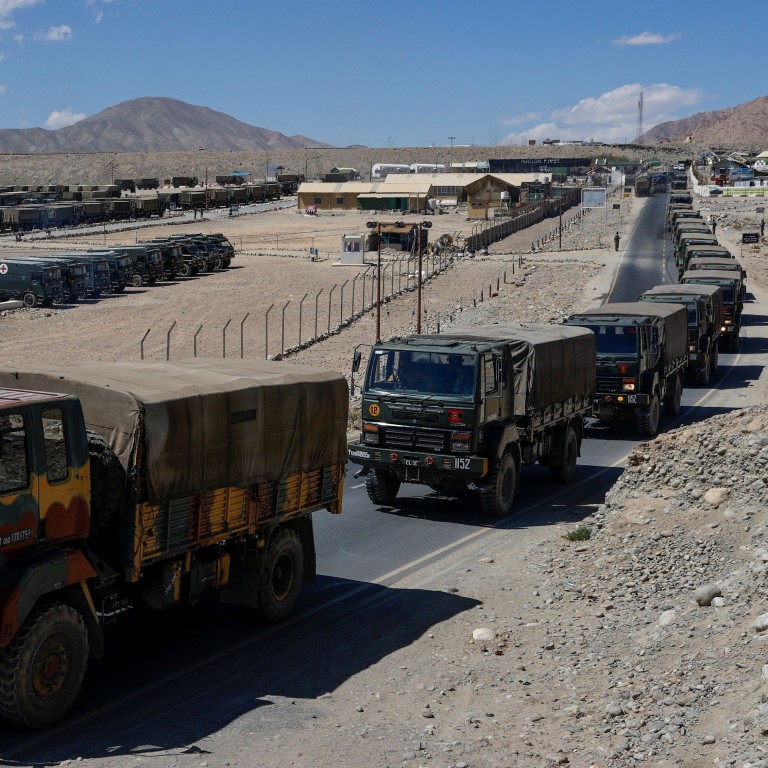
China-India border row: risk of tangled ties if New Delhi looks to third parties, says expert
- Beijing advised to consider how to prevent border differences spilling into other aspects of bilateral relations
- If India is revamping its China policy framework laid since 1988 then China must recalibrate too, says observer
Meanwhile this month, India and Japan sealed a logistics agreement to provide their militaries with access to each other’s bases for supplies and services to “enhance the interoperability” of their armed forces.
Why India’s growing economic reliance makes China hard to quit
Their foreign ministers, together with their US and Australian counterparts – members of the so-called Quadrilateral Security Dialogue – are expected to meet again in Tokyo next month. Japanese news agency Kyodo cited government sources saying the ministers were meeting as China worked to build its regional clout.
Lou Chunhao, deputy director of the Institute for South Asian Studies at the China Institutes of Contemporary International Relations, said India was aware that the capacity of its relationship with China to move forward hinged on, to much extent, whether both sides could handle the “third-party factor” or interference well.
“If India invites external elements into the Sino-Indian relationship it would not only be unhelpful but make issues even more complicated,” he said.
Lou said there had been much discussion among Indian think tanks in recent years about strengthening cooperation with the US in the face of a rising China and support for such ideas had grown since tension at the disputed western border had increased.
At an online forum last week hosted by the Washington-based Carnegie Endowment for International Peace, Shivshankar Menon, India’s former national security adviser and ambassador to China, said many more people in India would accept “doing things with the US, for the US, that actually US allies would do – without an alliance”.
“The actual practice of interoperability, of taking on particular roles and of fitting into a larger common strategy – I don’t see that being problematic today,” Menon said.
Lisa Curtis, senior director for South and Central Asia on US President Donald Trump’s National Security Council, told the forum that India increasingly accepted US involvement in South Asia “because of the situation that we are finding ourselves in”.
She said the present border stand-off had strengthened “US resolve to work towards building [a US-India strategic partnership] as a bulwark against Chinese aggression”.
China-India border dispute: its origins and impact
Lou said he hoped think tank discussions did not escalate to policymakers’ actual deliberations.
“Whether it is discussions about alliance or operational collaboration with the US; or recent moves among the US, Japan, Australia and India, they may send wrong signals to Beijing at the current sensitive moment,” he said.
Lou said there were shifts in the four decade-old Sino-Indian relationship framework. Delhi had tied the border question to the overall bilateral relationship; and also appeared to be deviating from a previous pledge of mutually supporting each other’s rise, he said.
“It seems it is getting clearer that India is revamping its China policy framework laid since 1988. If so, China will need to have a corresponding review and recalibration,” Lou said. “We also need to look into how to set up new confidence-building measures, and think about how to prevent border differences from spilling into other aspects of the bilateral relations.”
But that was not to say that China and India’s era of cooperation had ended. Besides being bound together by geography, they also shared common interests of safeguarding multilateralism, tackling climate change and advancing developing countries’ interests.
After the corps commander-level talks held on Monday, both sides said they agreed to strengthen communication on the ground, refrain from unilaterally changing the situation, and avoid any actions that may cause complications.
They also agreed to convene another round of corps commander talks “as soon as possible”. Indian media reported both sides remained in deadlock over how to disengage their troops or what positions to roll back to.
India-China border: is peace really on the horizon?
Speaking before the corps commander talks were announced, Lou said there was some doubt over whether the talks could effectively implement the foreign ministers’ consensus on India’s side, given the presence of different Indian forces at the clash points: the army, the Indo-Tibetan Border Police under the home affairs ministry, as well as the Special Frontier Force under the external intelligence agency.
“We will be observant,” Lou said, adding that the looming punishing winter at the Himalayan border also called for the need to solve the stand-off as soon as possible.

